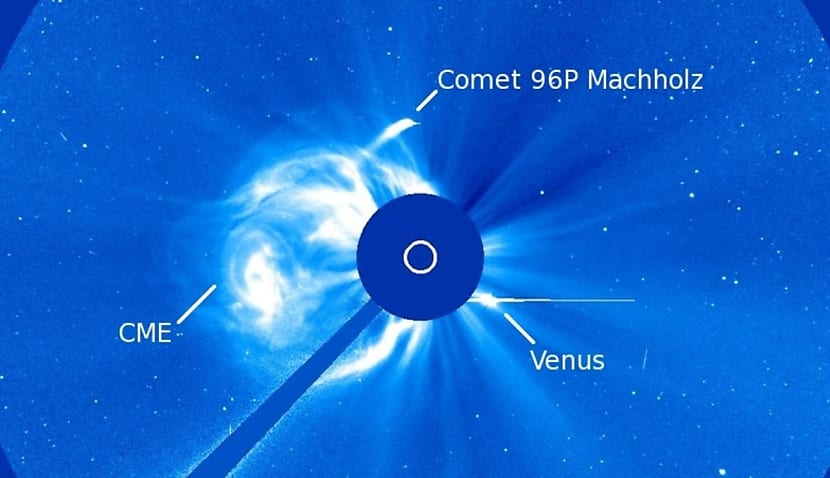The Delta Aquariids are active from mid-July and visible until late August and favours skywatchers in the southern hemisphere, while the weaker Alpha Capricornids also peak in the last week of July.
“The pieces of space debris that interact with our atmosphere to create the Southern Delta Aquariids are suspected to originate from comet 96P/Machholz,” said NASA.
“This short-period comet orbits the sun about once every five years.
“Comet Machholz was discovered by Donald Machholz in 1986. Comet Machholz’s nucleus is about four miles (6.4 kilometres) across.”
However, even the brighter Southern Delta Aquariids are challenging to spot, and Australians will struggle to view them when the moon is out.
NASA suggests finding an area away from city or streetlights and lying on your back to gaze up at the sky.
“Looking halfway between the horizon and the zenith and 45 degrees from the constellation of Aquarius will improve your chances of viewing the Southern Delta Aquariids.
“In less than 30 minutes in the dark, your eyes will adapt, and you will begin to see meteors. Be patient – the show will last until dawn, so you have plenty of time to catch a glimpse.”
The far smaller Alpha Capricornids produce around five meteors per hour compared to 20 for the Delta Aquariids.
They are known, though, for creating exceptionally bright fireballs that the moon’s light won’t obscure.
Meteors are pieces of space debris that enter Earth’s atmosphere and burn up. They can be small as a grain of sand or as large as a house.
When a meteor enters Earth’s atmosphere, it heats up due to friction. The heat causes the meteor to glow and create a streak of light in the sky.
Most meteors burn up completely before they reach the ground. However, some meteors are large enough to survive the journey through the atmosphere and reach the ground. These meteors are called meteorites.
Meteors can come from various sources, including comets, asteroids, and even the moon. Comets are icy bodies that orbit the sun.
As comets orbit the sun, they release dust and debris. This debris can enter Earth’s atmosphere and create meteor showers.
Asteroids, meanwhile, are rocky bodies that orbit the sun. Asteroids can also enter Earth’s atmosphere and create meteor showers.
Space Connect reported earlier this year how the meteor that made global headlines in Queensland was the biggest in Australia for at least 30 years.
Dr Ellie Sansom, who heads Curtin’s Desert Fireball project to track space rocks, made the discovery after analysing NASA data that dropped on Monday.
The meteor exploded 29 kilometres over Blackbull, a minuscule locality between the Gulf communities of Normanton and Croydon in the north-west of the state, on 20 May.
Now new figures provided by NASA suggest the meteor was travelling at 28 kilometres per second and the force of the blast was equivalent to exploding 7.2 kilotons of TNT.
Scientists have used the data to deduce the meteor would have had a diameter of 3.5 metres and weighed about 80,000 kilograms.
The Desert Fireball Network (DFN) is a network of 52 autonomous stations across Australia designed to track meteorites as they fall to Earth through the atmosphere.
Dr Sansom appeared on the Space Connect Podcast last year to talk through her work, and you can listen to the recording here.

Adam Thorn
Adam is a journalist who has worked for more than 40 prestigious media brands in the UK and Australia. Since 2005, his varied career has included stints as a reporter, copy editor, feature writer and editor for publications as diverse as Fleet Street newspaper The Sunday Times, fashion bible Jones, media and marketing website Mumbrella as well as lifestyle magazines such as GQ, Woman’s Weekly, Men’s Health and Loaded. He joined Momentum Media in early 2020 and currently writes for Australian Aviation and World of Aviation.

